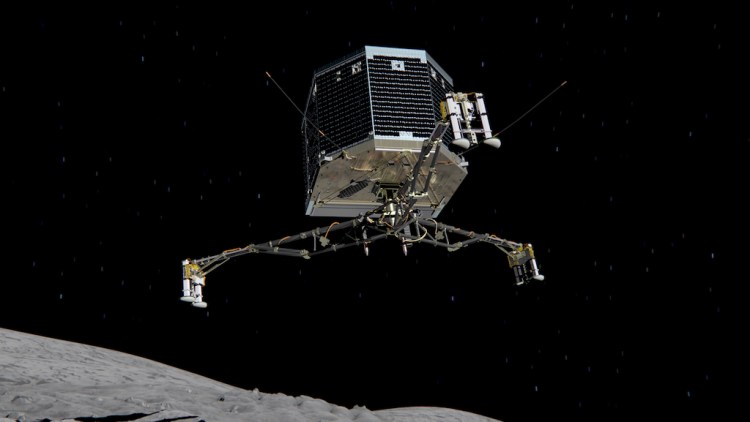Seven months after a bumpy landing that jeopardized the mission, the European Space Agency’s Philae comet lander has awoken.
Late Saturday night, the agency made contact with the explorer for less than two minutes. It was enough time to receive some 300 packets of data that will help explain what happened to the machine during its ill-fated landing.
Hello Earth! Can you hear me? #WakeUpPhilae
— Philae Lander (@Philae2014) June 14, 2015
The data from the first probe to ever land on a comet includes surface samples retrieved by drilling. Back in November, ESA also said that Philae did manage perform a slight rotation, leaving a shred of hope that its solar panels could catch enough light at some point to wake it back up.
Not only did it reawaken, but the information in those 300 packets explained that Philae actually came back to life at some point during this hibernation period. Philae, however, was unable to make contact with its Rosetta host ship and the ground crew.
In a blog post, DLR Project Manager Dr. Stephan Ulamec said “Philae is doing very well: It has an operating temperature of -35ºC and has 24 Watts available. The lander is ready for operations.”
ESA scientists estimate Philae has more than 8,000 additional packets of data banked in its memory that won’t be recieved until the next time they make contact.
Until then, they have to wait patiently for the next ping from Comet 67-P/Churyumov-Gerasimenko, which is currently 127 million miles from the Sun. It is expected in August to get as close as 115 million miles, before spinning back out into the outer reaches of the solar system.


